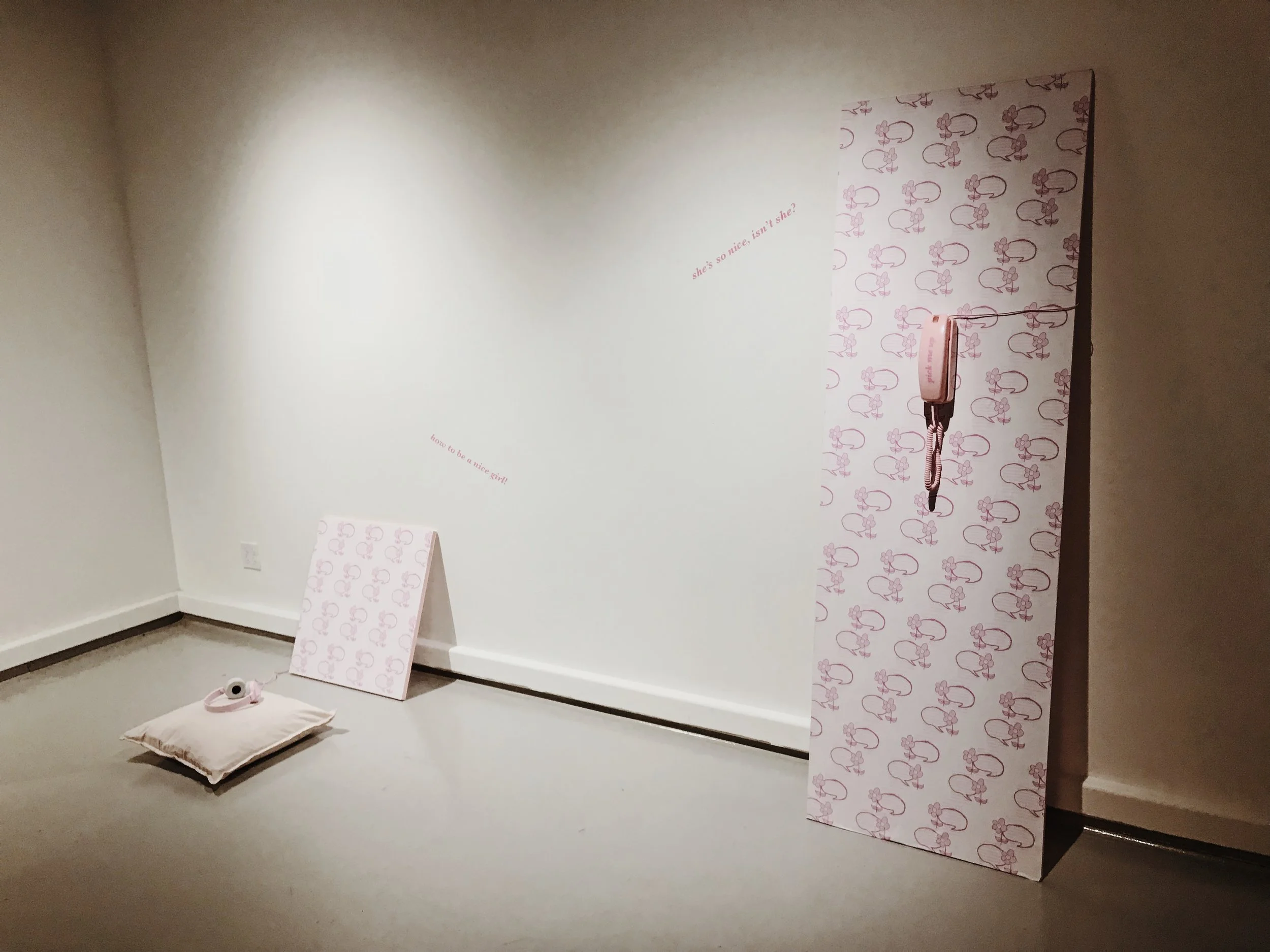no more mrs. nice girl
Written by lexi turin
Edited by Marina may
March 8, 2018
“I LOOK BACK ON TIMES WHEN A GUY’S DEFINITELY GRABBED MY ASS AND I TOLD HIM TO FUCK OFF, AND I’D THOUGHT, ‘OH MY GOD, WHY DID I DO THAT? I PROBABLY RUINED HIS NIGHT.’”
The art of Taylor Yocom is a candied exploration of conventional femininity’s enduring limitations. Housed within the moment of #MeToo, Yocom unpacks the societal pressures she has experienced as a woman—experiences to which countless others can relate. “I was raised in the Midwest and was always expected to be nice, so now I’m kind of unpacking that,” she says, surrounded by her most recent works. “This gender performativity of female niceness…[represents] such a singular [version of] femininity, and excludes so many voices. There are these pressures—that if you speak out about something that’s wrong, or something that is being done to you, there’s the fear that [you’ll be] seen as over reactive. I want to call attention to this whole culture that’s surrounding it.”
Unifying the space is her intentional use of the color “baby pink” (specifically titled as such), demonstrating “the idea of female niceness and how infantilizing that is.” Yocom cites the term “benevolent sexism,” a less overt subset of sexism that packages itself in casual positivity, resulting in a degradation that is more difficult to detect (and is, arguably, more harmful than its more hostile counterparts). In a video piece entitled “smile and nod,” Yocom challenges herself to do both for as long as she can (“I think I lasted two minutes, my face was burning”), demonstrating the monotonous exhaustion that comes with the pressure of letting the inappropriate behavior of men slide. “I recall times when I’ve been harassed,” she explains, “and how people just kind of expect you to put up with it.”
This dismissal of experience extends further to a print on the wall that looks, at first glance, like a framed section of simple, floral wallpaper. Moving closer, words appear to move forward from the pattern, reading, “one night I was walking home alone and a guy came up behind me and grabbed my waist. i said ‘leave me the fuck alone’ and he ran away. i still wonder what he expected me to do.” “I was thinking about how people treat women when they present what happened to them,” Yocom says of the piece. “I wanted to do something that, from afar, looked very benign but when you come closer, you realize what it is. I’m playing with how we’re expected to present what happens to us.”
Each piece is interactive to some degree, from the print requiring the viewer to step closer and confront it directly, to a looped video presentation providing a cushion before it for seating. Two of the more physically engaging works carry forward Yocom’s slumber party aesthetic, asking the viewer specifically to listen. The first, entitled, “how to be a nice girl!” features audio of Yocom reciting wikiHow instructions on how to, indeed, be a nice girl. These instructions are presented to the listener via a set of pink headphones sprouted from a board wallpapered with pink speech bubbles filled with “blah blah blahs” and flowers. The second piece, “she’s so nice, isn’t she?” features the same (albeit taller) wallpapered board—this time outfitted with a pink wall-mounted telephone inscribed with the instruction “pick me up.” “Everything that’s being said…are performative filler words,” Yocom says, whose voice can be heard from the telephone, saying, “No worries,” and, “Am I overreacting?” on a loop.
This ingrained tendency to minimize emotion is something Yocom recognizes as predominate in her generation. It’s represented especially well by the language she chooses to use in titling her work (pieces like, “lol sorry I’m like totally being a trash person” specifically demonstrating this connection between online speech patterns and avoidance—veiling pain with absurdity). “I think that’s such a millennial way of presenting your feelings, but then minimizing them,” she says. About showcasing her own vulnerability through her work (in that most pieces feature either some performative aspect by Yocom or relations of her personal experiences), she explains that “if it’s personal [subject matter], I usually make it generic enough so that it can apply to everyone.” This method of holding space for the stories of others by baring her own instills in Yocom’s work an intimate sense of solidarity—a steady resilience behind the wallpaper incessantly calling for change.
You can learn more about Taylor’s work by visiting www.tayloryo.com.

